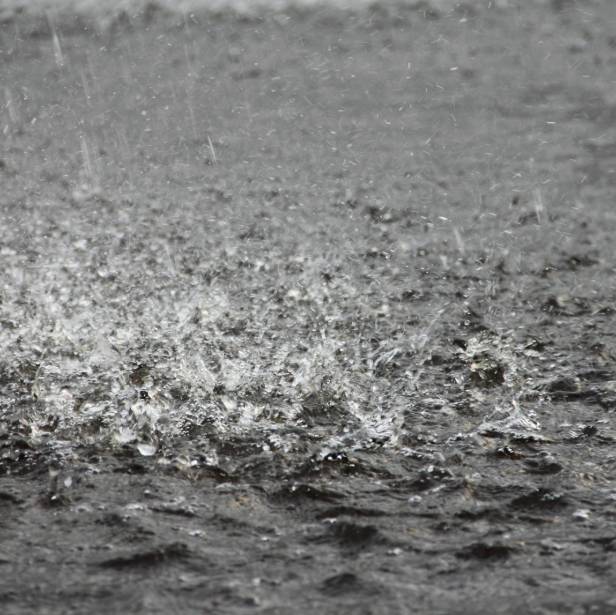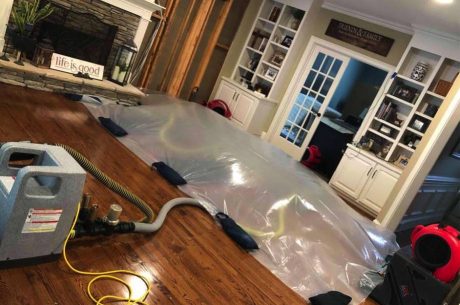When people think of Phoenix, Arizona, images of dry, sun-drenched landscapes often come to mind. The city is renowned for its desert climate, characterized by long, scorching summers and mild winters.
However, this desert city is no stranger to intense and sudden weather changes, particularly during the monsoon season. From June to September, Phoenix experiences monsoon rains that can lead to unexpected flooding, causing significant water damage to homes.
These rains, while offering a reprieve from the relentless heat, can also wreak havoc on urban infrastructure and residential properties. Understanding how these monsoon rains impact your home and learning effective prevention strategies can save you from expensive fixes.
Understanding Monsoon Season in Phoenix
What is the Monsoon Season?
Monsoon season in Phoenix is characterized by a shift in wind patterns that brings moisture from the Gulf of California and the Pacific Ocean. As the desert heat intensifies, it causes the air to rise, drawing in humid air, which results in thunderstorms.
The monsoon season is a distinct meteorological phenomenon, marked by its intensity and unpredictability. These storms can be both a blessing and a curse, providing much-needed rain while also presenting the risk of flooding. Although the moisture is essential for replenishing the arid environment, the rapid influx of water can be overwhelming.
The Impact of Monsoon Rains
During the monsoon season, thunderstorms can bring heavy rainfall in a short period. This deluge can overwhelm the ground’s ability to absorb water, particularly in urban areas where concrete and asphalt dominate. The heavy rains often exceed the capacity of storm drains, leading to rapid surface runoff.
As a result, streets can flood quickly, and homes may suffer from water intrusion, leading to water damage. The increased runoff can also lead to erosion and sediment deposition, further complicating drainage systems.
How Monsoon Rains Cause Water Damage in Phoenix Homes
Water Damage Risks
Water damage from monsoon rains can manifest in various ways. The most common issues include:
- Basement Flooding: Even in the desert, homes with basements are at risk. Water can seep through foundation cracks or windows, leading to basement flooding. This can create a breeding ground for mold and mildew, impacting indoor air quality and structural integrity.
- Roof Leaks: The intense rains can find vulnerabilities in roofing, allowing water to penetrate and cause damage to ceilings and walls. Over time, this can lead to rot and deterioration, necessitating expensive repairs or replacements.
- Window Leaks: Poorly sealed windows or those with aging frames may not withstand the heavy rains, resulting in leaks. These leaks can damage window sills, walls, and even flooring if not addressed promptly.
- Foundation Damage: Over time, excess water can erode the soil around a home’s foundation, leading to shifting and cracking. This can compromise the structural stability of the house, resulting in costly repairs and potential safety hazards.
The Cost of Water Damage
Water damage repair can be expensive and stressful. Beyond the immediate damage to walls, floors, and personal belongings, there are long-term risks such as mold growth. Mold can develop within 24-48 hours of water exposure, posing health risks and necessitating extensive cleanup efforts. The presence of mold can aggravate respiratory issues and allergies, making it a serious concern for homeowners.
Emergency Water Restoration: A Critical Response

What is Emergency Water Restoration?
Emergency water restoration involves the immediate response to water damage to minimize the extent of the damage. Professionals use specialized equipment to remove water, dry affected areas, and restore your home to its pre-damaged state. This process often includes dehumidification, sanitization, and the removal of damaged materials. Rapid response is crucial to prevent further deterioration and to mitigate health risks associated with mold and bacteria.
The restoration process begins with a thorough assessment to identify the source and extent of the damage. This allows professionals to develop an effective plan tailored to the specific needs of the home. By acting quickly, restoration specialists can help minimize disruption to daily life and ensure a swift recovery.
Why Professional Help Matters
Attempting to handle water damage on your own can be risky. Professionals not only have the tools to efficiently remove water but also the expertise to identify hidden damage and prevent mold growth. Their training and experience enable them to detect issues that may not be immediately apparent to the untrained eye. Hiring a water damage restoration service ensures a thorough job, safeguarding your home and health.
Home Flood Prevention Strategies
Regular Maintenance
- Inspect and Repair Roofs: Regularly check your roof for any signs of damage or wear. Repair or replace shingles as needed to prevent leaks during heavy rains. Ensuring your roof is in good condition is a proactive step in protecting your home from water intrusion.
- Seal Windows and Doors: Ensure all windows and doors are properly sealed to prevent water intrusion. Regularly check for gaps or cracks and apply caulking or weather stripping as needed.
- Gutter Maintenance: Clean gutters and downspouts regularly to ensure they can efficiently channel water away from your home. Blocked gutters can lead to water overflow, potentially causing damage to the roof and walls.
Landscaping Considerations
- Grading: Ensure the ground around your home slopes away from the foundation. This helps prevent water from pooling near your home and seeping into the foundation. Proper grading can significantly reduce the risk of basement flooding and foundation damage.
- Drainage Systems: Consider installing French drains or other drainage solutions to direct water away from your property. These systems can be tailored to the specific needs of your landscape, providing an effective means of managing stormwater.
Emergency Preparedness
- Water Sensors and Alarms: Install water detection systems that alert you to leaks or flooding in critical areas like basements. These devices can provide early warning, allowing you to take swift action to mitigate damage.
- Backup Sump Pump: If your home has a sump pump, ensure it’s in working order and consider a battery backup in case of power outages. A reliable sump pump can be a crucial defense against basement flooding during heavy rains.
Conclusion
Monsoon rains in Phoenix are a double-edged sword; they bring much-needed moisture but also pose a real threat to homes through flooding. Understanding the risks associated with desert flooding and monsoon rains can help you take proactive measures to protect your home. From regular maintenance and professional water damage restoration to smart landscaping and emergency preparedness, there are numerous ways to safeguard your property from the wrath of the monsoon season.
By staying informed and prepared, you can enjoy the beauty of the monsoon without the stress of unexpected water damage. Protect your home today and ensure it remains a safe haven, rain or shine. Give our team at PuroClean of West Phoenix a call today if you’re worried about water damage.



